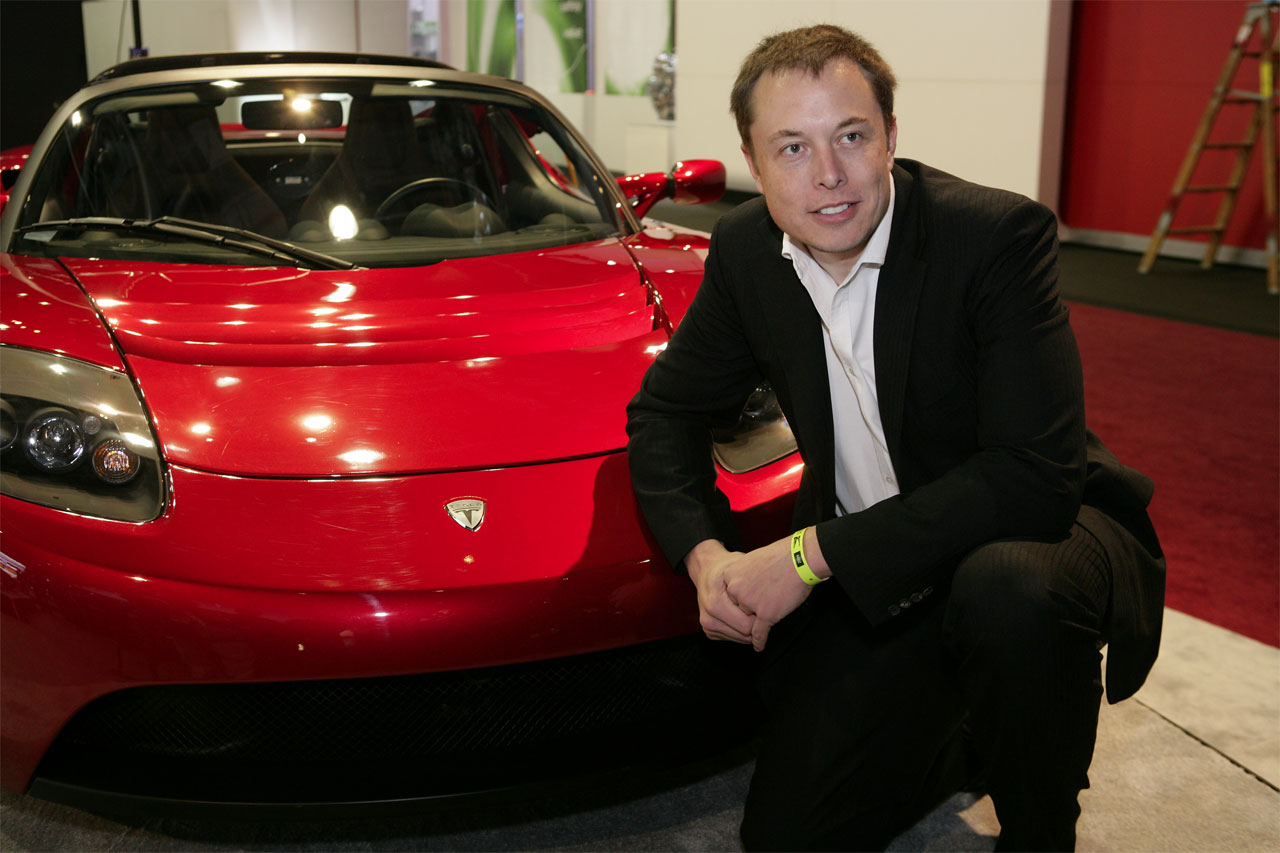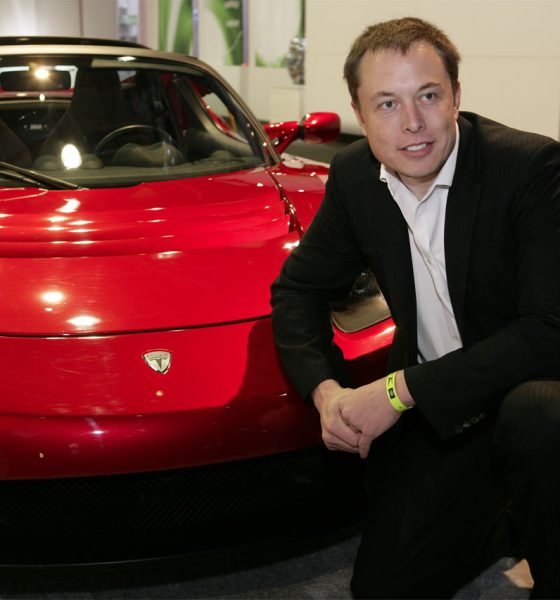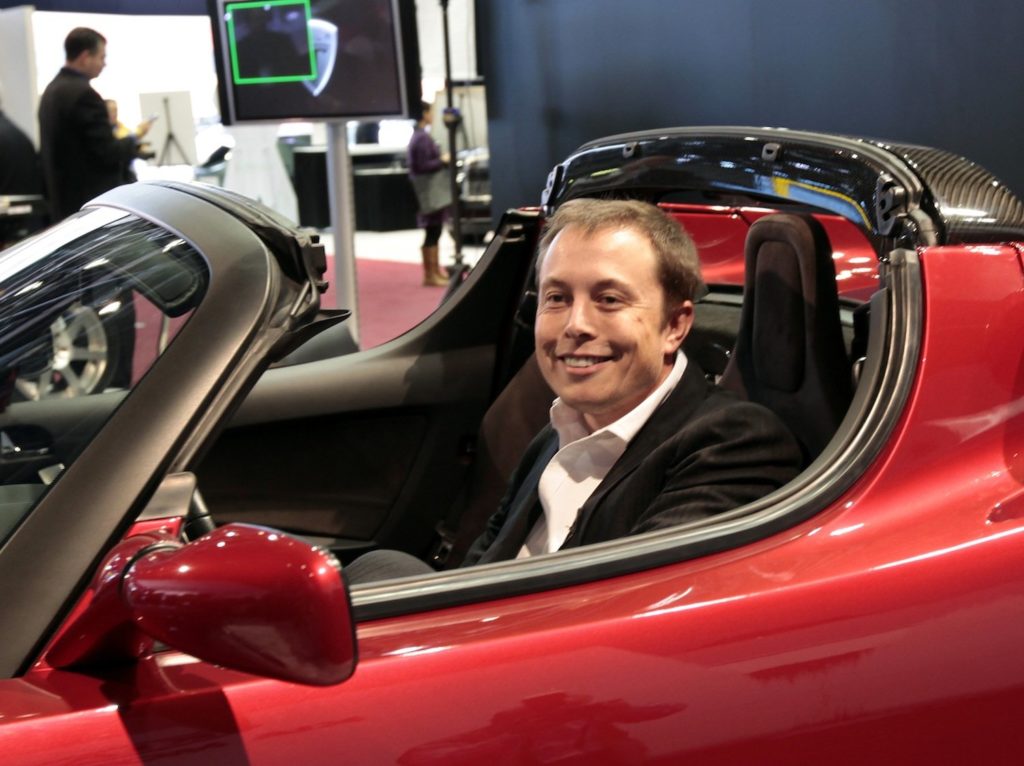

News
SpaceX Falcon Heavy to launch Elon Musk’s Tesla Roadster into Mars orbit
While it initially appeared to be an Ambien-induced Twitter troll from the famous CEO, Elon Musk has announced that the inaugural launch of SpaceX’s Falcon Heavy, now aiming for January 2018, will carry his personal cherry red Tesla Roadster as cargo.
Musk’s classic embellishments and hyperbole triggered some understandable skepticism, claiming that the Tesla would head to Mars while playing David Bowie’s “Space Oddity,” and would remain in deep space for “a billion years” if it survived the launch.
Payload will be my midnight cherry Tesla Roadster playing Space Oddity. Destination is Mars orbit. Will be in deep space for a billion years or so if it doesn’t blow up on ascent.
— Elon Musk (@elonmusk) December 2, 2017
While the Mars and “Space Oddity” aspects have yet to be verified, SpaceX’s head of new product introduction, Joy Dunn, subtweeted Musk’s original announcement, assuaging any doubts about the claim’s legitimacy. Much remains unknown, but the information from Dunn and Musk points to a humorous heavy payload being placed into a high Earth orbit, if not on a trajectory to Mars, and will feature plenty of camera coverage in space.
@beeberunner @nextspaceflight oh this is legit and of course there will be cameras!
— Darby Dunn (@RocketJoy) December 2, 2017
In all fairness, sending a Roadster to Mars would be par for the course for Musk and SpaceX, who in a frankly underappreciated turn of events sent a massive wheel of cheese into orbit with the first launch of a Dragon spacecraft.
SpaceX intends to attempt recovery of all three first stages of the first Falcon Heavy, with the two side boosters landing at Cape Canaveral’s LZ-1, and the center core landing aboard the Of Course I Still Love You droneship. The attempted recovery of all three cores would appear to preclude the possibility of a Mars mission, as it is understood that Falcon Heavy’s payload to Mars in its fully reusable configuration would be ~4000kg. Sending a 1500kg Roadster, especially one stripped of its battery, is still within the realm of possibility, but the burden would be on Falcon 9’s second stage to survive the several month long coast period between Earth and Mars.

Elon Musk with a comical grin while sitting in his red Tesla Roadster. (SFGate)
In the meantime, we can speculate with all due haste as to what the first space-faring Tesla Roadster (confirmed to be Roadster 1.0) will carry on its exceptional journey.
One can imagine that the footage garnered along the way would be all the advertising material Tesla could ever possibly need for the indefinite future, particularly for the company’s next generation Roadster.
Many giddy Twitter and Reddit users almost immediately let loose a stream of potential ridiculous slogans: “the first production car to orbit Mars,” “new Tesla Roadster upgrade has a range of 54 million kilometers,” “Fastest production car,” etcetera. Comic relief aside, the sheer shock value of orbital sunrise or even Mars from the cockpit of a Tesla Roadster certainly can’t be denied outright, even if the absurdity is rather high.
Time will tell if SpaceX has chosen to risk a more productive use of Falcon Heavy’s inaugural launch, perhaps as soon as next month. While it was later removed at the request of SpaceX, a photo taken Thursday by California-based space journalist Sandy Mazza showed Falcon Heavy’s second stage and all three first stage boosters preparing for launch inside the Horizontal Integration Facility (HIF) at LC-39A. The public will almost undoubtedly get its first view of an integrated Falcon Heavy within the next few weeks, certainly before Christmas if things go as planned.

News
Tesla FSD fleet is nearing 7 billion total miles, including 2.5 billion city miles
As can be seen on Tesla’s official FSD webpage, vehicles equipped with the system have now navigated over 6.99 billion miles.

Tesla’s Full Self-Driving (Supervised) fleet is closing in on almost 7 billion total miles driven, as per data posted by the company on its official FSD webpage.
These figures hint at the massive scale of data fueling Tesla’s rapid FSD improvements, which have been quite notable as of late.
FSD mileage milestones
As can be seen on Tesla’s official FSD webpage, vehicles equipped with the system have now navigated over 6.99 billion miles. Tesla owner and avid FSD tester Whole Mars Catalog also shared a screenshot indicating that from the nearly 7 billion miles traveled by the FSD fleet, more than 2.5 billion miles were driven inside cities.
City miles are particularly valuable for complex urban scenarios like unprotected turns, pedestrian interactions, and traffic lights. This is also the difference-maker for FSD, as only complex solutions, such as Waymo’s self-driving taxis, operate similarly on inner-city streets. And even then, incidents such as the San Francisco blackouts have proven challenging for sensor-rich vehicles like Waymos.
Tesla’s data edge
Tesla has a number of advantages in the autonomous vehicle sector, one of which is the size of its fleet and the number of vehicles training FSD on real-world roads. Tesla’s nearly 7 billion FSD miles then allow the company to roll out updates that make its vehicles behave like they are being driven by experienced drivers, even if they are operating on their own.
So notable are Tesla’s improvements to FSD that NVIDIA Director of Robotics Jim Fan, after experiencing FSD v14, noted that the system is the first AI that passes what he described as a “Physical Turing Test.”
“Despite knowing exactly how robot learning works, I still find it magical watching the steering wheel turn by itself. First it feels surreal, next it becomes routine. Then, like the smartphone, taking it away actively hurts. This is how humanity gets rewired and glued to god-like technologies,” Fan wrote in a post on X.
News
Tesla starts showing how FSD will change lives in Europe
Local officials tested the system on narrow country roads and were impressed by FSD’s smooth, human-like driving, with some calling the service a game-changer for everyday life in areas that are far from urban centers.

Tesla has launched Europe’s first public shuttle service using Full Self-Driving (Supervised) in the rural Eifelkreis Bitburg-Prüm region of Germany, demonstrating how the technology can restore independence and mobility for people who struggle with limited transport options.
Local officials tested the system on narrow country roads and were impressed by FSD’s smooth, human-like driving, with some calling the service a game-changer for everyday life in areas that are far from urban centers.
Officials see real impact on rural residents
Arzfeld Mayor Johannes Kuhl and District Administrator Andreas Kruppert personally tested the Tesla shuttle service. This allowed them to see just how well FSD navigated winding lanes and rural roads confidently. Kruppert said, “Autonomous driving sounds like science fiction to many, but we simply see here that it works totally well in rural regions too.” Kuhl, for his part, also noted that FSD “feels like a very experienced driver.”
The pilot complements the area’s “Citizen Bus” program, which provides on-demand rides for elderly residents who can no longer drive themselves. Tesla Europe shared a video of a demonstration of the service, highlighting how FSD gives people their freedom back, even in places where public transport is not as prevalent.
What the Ministry for Economic Affairs and Transport says
Rhineland-Palatinate’s Minister Daniela Schmitt supported the project, praising the collaboration that made this “first of its kind in Europe” possible. As per the ministry, the rural rollout for the service shows FSD’s potential beyond major cities, and it delivers tangible benefits like grocery runs, doctor visits, and social connections for isolated residents.
“Reliable and flexible mobility is especially vital in rural areas. With the launch of a shuttle service using self-driving vehicles (FSD supervised) by Tesla in the Eifelkreis Bitburg-Prüm, an innovative pilot project is now getting underway that complements local community bus services. It is the first project of its kind in Europe.
“The result is a real gain for rural mobility: greater accessibility, more flexibility and tangible benefits for everyday life. A strong signal for innovation, cooperation and future-oriented mobility beyond urban centers,” the ministry wrote in a LinkedIn post.
News
Tesla China quietly posts Robotaxi-related job listing
Tesla China is currently seeking a Low Voltage Electrical Engineer to work on circuit board design for the company’s autonomous vehicles.

Tesla has posted a new job listing in Shanghai explicitly tied to its Robotaxi program, fueling speculation that the company is preparing to launch its dedicated autonomous ride-hailing service in China.
As noted in the listing, Tesla China is currently seeking a Low Voltage Electrical Engineer to work on circuit board design for the company’s autonomous vehicles.
Robotaxi-specific role
The listing, which was shared on social media platform X by industry watcher @tslaming, suggested that Tesla China is looking to fill the role urgently. The job listing itself specifically mentions that the person hired for the role will be working on the Low Voltage Hardware team, which would design the circuit boards that would serve as the nervous system of the Robotaxi.
Key tasks for the role, as indicated in the job listing, include collaboration with PCB layout, firmware, mechanical, program management, and validation teams, among other responsibilities. The role is based in Shanghai.
China Robotaxi launch
China represents a massive potential market for robotaxis, with its dense urban centers and supportive policies in select cities. Tesla has limited permission to roll out FSD in the country, though despite this, its vehicles have been hailed as among the best in the market when it comes to autonomous features. So far, at least, it appears that China supports Tesla’s FSD and Robotaxi rollout.
This was hinted at in November, when Tesla brought the Cybercab to the 8th China International Import Expo (CIIE) in Shanghai, marking the first time that the autonomous two-seater was brought to the Asia-Pacific region. The vehicle, despite not having a release date in China, received a significant amount of interest among the event’s attendees.








